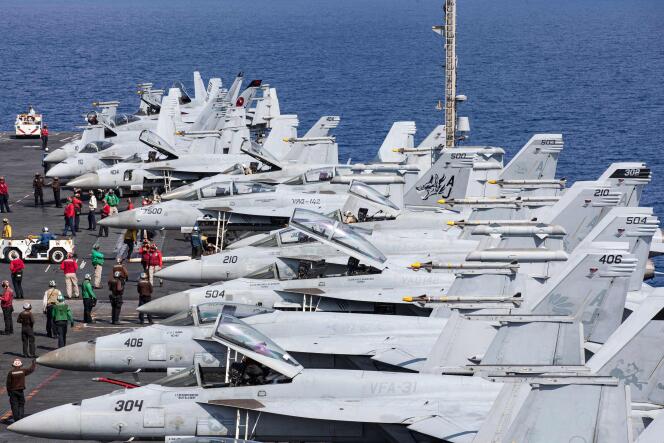


Three weeks after the start of the war between Israel and Hamas, US naval deployment in the Mediterranean is reaching levels rarely seen before. With more than 15 surface vessels and over 15,000 soldiers, not counting the escort submarines, the American response goes beyond mere reassurance to reflect real concerns about the risk of regional escalation, particularly with Iran.
A milestone will be reached when the second aircraft carrier announced by the Pentagon on October 14 passes through the Strait of Gibraltar. Currently, the USS Dwight D. Eisenhower, which sailed from Norfolk, Virginia, on the East Coast of the United States, is still in the middle of the Atlantic. It was originally intended to take over from the USS Gerald R. Ford, the first aircraft carrier already in the Mediterranean, which was diverted to Cyprus on October 9, the day after the Hamas attacks. But as the USS Gerald R. Ford is the largest and newest of the US Navy's 11 aircraft carriers, the Pentagon chose to keep it at sea.
According to military experts, however, the two carriers are not expected to remain together in the Mediterranean. US Secretary of Defense Lloyd Austin hinted at this on October 14. Xavier Vavasseur, editor-in-chief of Naval News, noted, "The USS Gerald R. Ford will remain under United States European Command, while the USS Eisenhower has been placed directly under United States Central Command, the hub responsible for military operations in the Middle East. It could therefore make its way toward the Red Sea and the Persian Gulf."
The US aims to form a very large naval bubble around Israel, containing the risk of retaliation from Iran or armed groups affiliated with it, from Hezbollah in Lebanon to the Houthis in Yemen. These groups are equipped with sophisticated weaponry containing a whole range of missiles capable of reaching distances of up to 2,400 kilometers, and therefore potentially capable of reaching Israel. Hezbollah's arsenal, in particular, is estimated at over 120,000 missiles and rockets, including guided munitions. These could penetrate the Iron Dome, Israel's air defense system that protects its territory.
However, American aircraft carriers and the ships that accompany them are equipped with powerful strike capabilities and anti-aircraft and anti-missile defenses. This is thanks in particular to a combat system known as Aegis, which fuses radar and weapons system data. "Each aircraft carrier can provide a bubble of protection over a territory the size of France," explained Vavasseur. On October 19, the Aegis system intercepted three missiles and eight drones fired from Houthi-controlled territory in western Yemen.
You have 55% of this article left to read. The rest is for subscribers only.
